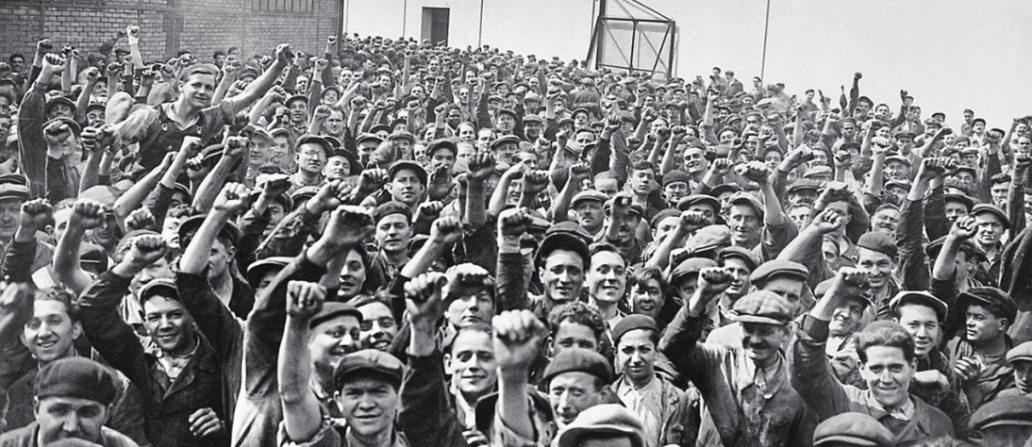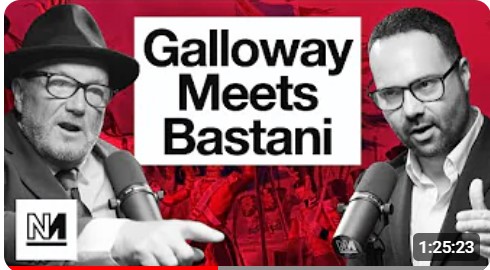By Greg Oxley, La Riposte, France
This is the second part of a two-part article by Greg Oxley, editor of the French marxist newspaper La Riposte. The article analyses the revolutionary events of the 1930s and draws lessons, not just for the working class in France today, but for workers all over the world.
Part 1 (link here) covered the development of the French workers’ parties in the wake of the Russian Revolution and analysed the political zigzags of the Communist Party leadership in that period. It ended with these leaders aligning themselves with the main capitalist party, The Radical Party in a Popular Front in July 1935.
Part 2 covers the election of the Popular Front government in April/May 1936 and the strike wave that immediately followed, leading to a general strike even before the new parliament had its first sitting. It covers the subsequent counter-revolution that culminated in the dictatorial pro-Nazi regime of Pétain. And draws lessons for today from these events.
**************
The Popular Front won the elections of 26 April and 3 May 1936. With 1,955,000 votes – a drop of 400,000 votes – the Radicals were the big losers of the election. But in the second round, the scale of their losses was reduced by voluntary withdrawals of Socialist and Communist candidates in their favour, which made them the arbiters of the Chamber of Deputies. No majority was possible without the Radicals.
The Communists, on the other hand, won 1,469,000 votes, 700,000 more than in the previous election. The break with the “neo-socialists” cost the SFIO barely 34,000 votes, which totalled 1,977,000, beating the Radicals by 20,000 votes. With 146 seats, the SFIO became, for the first time in the country’s history, the largest group in the House. As for the Radicals, they won 116 seats, compared to 159 previously. The PCF went from 10 to 77 seats.
The greatest revolutionary movement since the Paris Commune
The Constitution of the Third Republic provided for a one-month delay between the elections and the establishment of the new government. This period was usually devoted to the peaceful allocation of portfolios, and other administrative formalities. But in 1936, it marked the beginning of the greatest revolutionary movement France had known since the Paris Commune. While Blum, with the support of Thorez and the leaders of the PCF, was preparing to watch over the interests of capitalism in collaboration with the country’s main capitalist party, the militant working class was moving into action.
On May 14th, the metalworkers of the Bloch factory went on strike. They occupied the factory day and night. The people of the neighbourhood brought them food and encouragement. The factory management relented the next day, granting the strikers a pay rise and paid holidays. In the days that followed, other strikes took place in different parts of the country, and they too won their demands in most cases. These early victories captured the attention of the entire working class. Blum, who tried to reassure capitalist circles about the “moderation” of his intentions, was frightened by the scale of the movement. He called upon workers to be patient, that is, in effect, to do nothing. But in vain. On May 26th, all the factories in the automotive sector – including the 35,000 workers at the Renault plant in Billancourt – and in the aviation sector in the Seine department went on strike.
The movement came from below
The leadership of the CGT, reunified since March, under the leadership of Léon Jouhaux, had nothing to do with the outbreak of the movement. The movement came from below and quickly spread to other industries, including the construction workers working on the International Exhibition. Jouhaux encouraged the workers to return to work but was unable to prevent the movement from growing. Beyond the industrial workers, the strike movement spread to layers of the working class that were hitherto unorganized and inert, but often very harshly exploited.
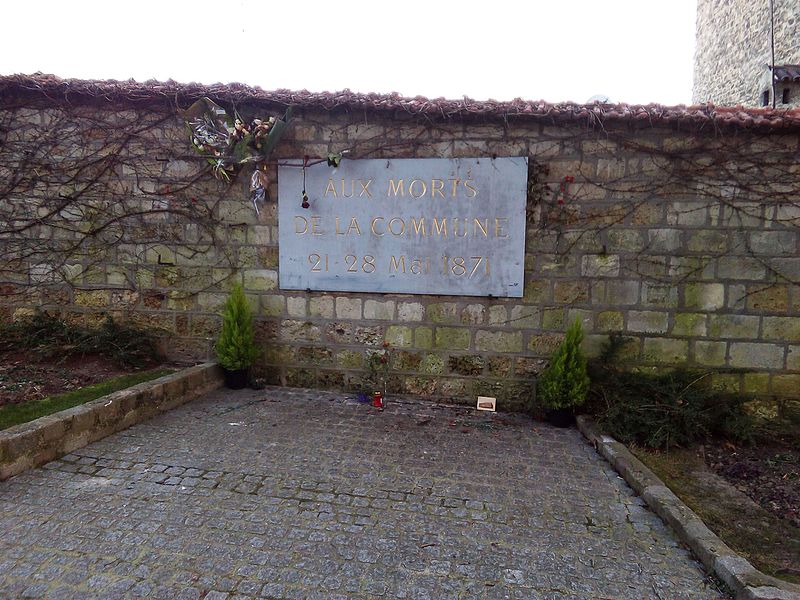
Signs of a revolutionary awakening of the working class were everywhere. On May 24th, during the traditional demonstration to commemorate the Paris Commune, at the Père Lachaise cemetery, the number of demonstrators – which did not usually exceed a few hundred – was close to 600,000! Soldiers from a barracks in Versailles carried a banner that read: “The Versailles soldiery of 1871 murdered the Commune. The soldiers of Versailles in 1936 will avenge it!”
The workers demanded minimum wage guarantees, a 40-hour week (instead of 48), increased overtime pay and paid holidays. Night and day, they occupied workplaces, organised picket lines, set up committees to ensure the application of collective decisions and the protection of the machinery and equipment against acts of sabotage. On May 31st, Le Temps, the mouthpiece of the capitalist class, noted with dismay “the order that reigns in the factories.” The workers behaved, the paper said, “as if the factories already belonged to them.” By June 4th, on the eve of the new government’s inauguration, strikes had spread to virtually all the main industries in the country and began to paralyse the national economy.
A general strike raises the question of power
An unlimited general strike like that of 1936 raises the class struggle to a level that implicitly raises the question of power. As Trotsky said: “It is clearly the union of the oppressed against their oppressors.” By its very nature, the general strike obliges the working class to establish its direct control over the means of production to some extent and to gradually assume certain functions of the state. Through the vigorous action of the workers, a revolutionary situation is created in which the future socialist state begins to take shape – albeit in an embryonic form.
This threat to the very existence of capitalism was in contradiction with the policy of class collaboration embodied in the Popular Front. The general strike frightened not only the capitalist class and its representatives at the head of the Radical Party, but also the “socialist” and “communist” architects of the Popular Front. Thorez had insisted that capitalist property should not be infringed upon, but now the workers were moving in the direction of taking over this property.
The calls for calm, “moderation” and a return to work on the part of the leaders of the CGT, Blum and Thorez, were initially ineffective. Thorez insisted that the situation was “not revolutionary”, and warned workers of the danger of “playing into the hands of fascism”. But the workers did not heed to the injunctions of their leaders. When Blum sent the communist trade union leader Henri Reynaud, accompanied by Jules Moch (secretary general of the government), to obtain from the strikers a delivery of the fuel oil needed by the bakeries of the capital, they returned empty-handed. The workers, suspecting what the visit was intended to achieve, refused even to meet them.
Numbers on strike reaches one million
By June 6th, the number of strikers had risen to more than 500,000. On June 7th, it approached one million. The bosses feared that the continuation of the strike movement would lead to a revolution and the end of capitalist property. In a panic, and to help the leaders of the CGT put an end to the movement, the Blum government organised negotiations at the Hôtel Matignon on June 7th.
When they are under threat of losing everything, the capitalists will often make concessions, with the intention of taking them back later, when the danger of revolution has dissipated. It was in this state of mind that the employers, represented by the CGPF, approached the Matignon negotiations. Blum tried to limit the concessions made in terms of wage increases, which ranged from 7% to 12% in the private sector. The employers also conceded the 40-hour week and 2 weeks of paid leave, as well as the principle of collective agreements and improved trade union rights.
In his speech to the Chamber of Deputies, Blum said he was proud of the Matignon Agreement, but stressed what everyone already knew: “The crisis is not over.” He urged that the laws on the promised reforms be enacted quickly, saying, “We are, as you know, gentlemen, in circumstances where every hour counts.” Indeed, the Matignon Agreement did not put an end to the strike movement, nor did it do anything to bolster the authority of the socialist, communist and trade union leaders. On the contrary, the strikes were growing in intensity. The CGT saw its membership increase massively, rising from one million before the beginning of the general strike to 5,300,000. The metalworkers of the Paris region rejected the agreements outright and voted to continue the strike.
The number of strikers increased not only in industry and commerce, but also in rural areas, where thousands of agricultural workers occupied many of the larger farms. In Paris and many provincial towns, cafés, hotels and restaurants were occupied by employees. Here and there organisations comparable to the soviets of the Russian Revolution began to take shape. For example, on June 8th, at the Hotchkiss factory in Levallois, in the northwestern suburbs of Paris, an assembly of delegates from 33 factories in the surrounding area passed a resolution calling for the election of a “central strike committee”. On June 11th, all the main industries in Paris and the Seine department were on strike, and a new assembly of 587 delegates representing 243 factories in the Paris region was held in the capital. The total number of strikers, even according to government figures, was now approaching 1,200,000.
Blum shows the true anti-working class character of the Popular Front
Blum put troops and mobile guards on alert, ready to march on Paris to suppress the strike if necessary. He began to threaten the workers, and repeatedly declared that his Popular Front government would “maintain order” at any cost.
Thus the workers were constantly clashing with the leaders of their own organisations, who were striving to defend capitalist property and stop the strike movement. On June 11th, Thorez addressed the metal workers. He warned them against the risk of frightening the petty bourgeoisie and breaking up the Popular Front, by “aggravating disorder”. “You have to know how to consent to deals, you have to know how to end a strike,” he said, because “the time for revolution has not come.”
New sectors of the working class, such as department store employees in Paris, threw themselves into the struggle in the aftermath of Thorez’s intervention, which was aimed at putting an end to it. However, over the next two weeks, the treacherous behaviour of the leadership began to exhaust and demoralise the strikers. The movement would soon enter into decline and eventually die out.
How the workers movement was betrayed
The Popular Front government lasted only twelve months, until June 1937. French capitalism owed its survival to Blum. When the leadership of the workers’ movement offers no alternative to capitalism, striving to contain a mass movement within the bounds of the system, a potentially revolutionary opportunity can be lost, often with devastating consequences.
Blum was fully conscious of his own treacherous role. He later recalled his role in 1936 in the following terms: “At that time, among the bourgeoisie and especially in the employers’ circles, they counted on me and put their hope in me as a saviour. The situation was so distressing and the country so close to civil war that there seemed be no hope other than through the providential intervention of a man who was said to have enough power of persuasion and influence over the working class to make it hear the voice of reason, so that it would not use or abuse its force.” However, Blum would never have been able to save French capitalism in 1936 without the equally treacherous behaviour of the leader of the PCF, Maurice Thorez.
With the collapse of the Popular Front, strikers and demonstrators were violently repressed by police and reactionary gangs. Banks and big industrialists financed and armed fascist organisations, including the Parti Populaire Français (PPF) led by the ex-communist Jacques Doriot. In June 1940, the progress of the counter-revolution culminated in the dictatorial pro-Nazi regime of Pétain. A few weeks later, Trotsky, who had keenly followed and analysed the rise and fall of the revolutionary tide in France, was assassinated in Mexico by an agent of Stalin.
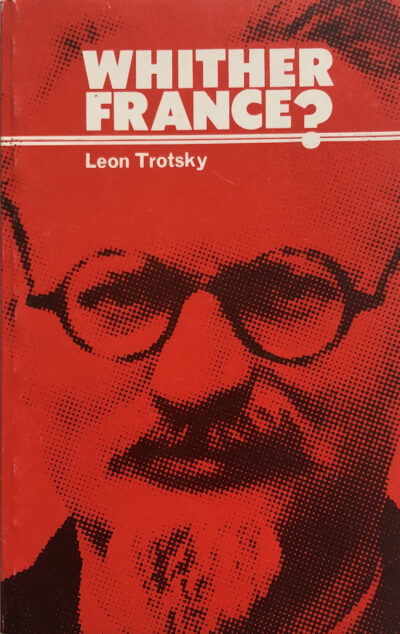
In an unfinished text which was not published until after his death, Trotsky wrote: “In France, there is no fascism in the true sense of the word. The regime of the senile Marshal Pétain represented a senile form of Bonapartism at the time of the decline of imperialism. But this regime itself was made possible only after the prolonged radicalisation of the working class that culminated in the explosion of June 1936 had failed to find a revolutionary solution. The Second and Third Internationals, and the reactionary charlatanism of the ‘Popular Front’, have disappointed and demoralised the working class. After five years of propaganda in favour of an alliance of democracies and collective security, after Stalin’s sudden passage into Hitler’s camp [with the Stalin-Hitler Pact], the French working class found itself caught unawares. The war provoked terrible disorientation and a state of mind of passive defeatism or, to put it more accurately, of indifference in the face of an impasse. Out of this web of circumstances arose, firstly, an unprecedented military catastrophe, and then the despicable regime of Pétain. Precisely because the regime of Pétain is a senile form of Bonapartism, it has no firm or stable basis, and can be overthrown by a revolutionary uprising much easier than a fascist regime.”
The overthrow Trotsky expected finally took place in August 1944, when Pétain and the German Occupation suffered a decisive defeat from an armed insurrection of the Parisian working class.
Changed balance of forces since the 1930s
The industrial development of France since the Second World War has led to a profound change in the relationship between the capitalist class and the working class, which today constitutes 86% of the working population. Today, the workers carry out all the essential functions of society. Never in the history of France, has the wage-earning class been so powerful. In the 1930s, the urban population still made up only half of the total population. Today, the “rural” population proper represents no more than 5% of the total population – and within this small minority, 85% are wage earners. The erosion of the middle layers of society means that the most extreme form of capitalist reaction – the establishment of a fascist regime – is now practically impossible in France. Whereas periodic swings towards nationalist, xenophobic, and reactionary political movements are entirely possible, the social basis necessary for the development of a mass fascist movement no longer exists.
Marx once wrote that, in France, the class struggle is always carried “to its end”. He said this because, in his own time, the still preponderant place of the peasantry in the economy and in the army meant that any urban revolutionary movement that failed to rapidly attract the support of the lower strata of the petty bourgeoisie would inevitably be crushed. The events of February-June 1848 and the experience of the Commune of 1871 bore out the truth of this tragic reality. Even more than sixty years later, from June 1936 onwards, it took only 12 months for the balance of forces to be radically reversed in favour of the counter-revolution.
In the conditions of our time, however, the greatly increased social weight of the working class means that once the revolutionary process is seriously initiated, the workers and youth will have not one, but possibly several opportunities to seize power before the capitalist class is able to decisively regain the upper hand. The revolution of 1968, like that of 1936, was aborted by the faulty leadership of the PCF. However, the course of events that followed the defeat of 1968 showed the limits imposed on reaction by the change in the balance of forces between the classes that had occurred since the 1930s. Today, after more than 50 years of economic and social change, those limits are even narrower than they were in 1968.
The fight for socialism is international
Despite all the difficulties of today’s situation, the French workers’ movement confronts capitalism in a national and international context considerably more favourable than that of the 1930s.
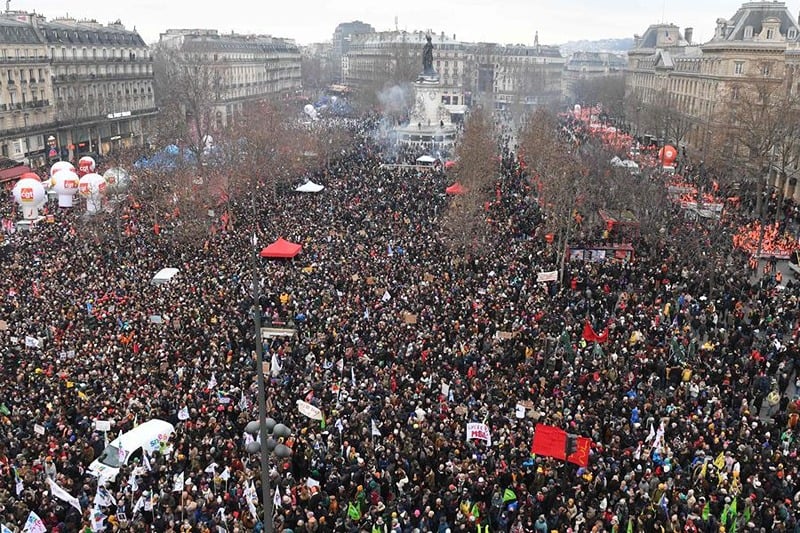
Mass demonstration in Paris, January 2023
All the events of recent years point to a period of intense social conflict, of major clashes between the capitalist class and the working people. The fundamental premises of next French Revolution lie in the inability of capitalism to exist on any other basis than the constant erosion of the living standards and social conquests of past, in its inexorable decline as a world power.
The coming struggles will be “national” only in the sense that their most immediate task will be to put an end to the grip of the capitalist class on the economy, on the administration, on the armed forces and the police, and on all other instruments of its domination, within the confines of France’s borders. However, as the conflict between the classes grows in sharpness and scale, it will necessarily have an international impact, arousing the interest and enthusiasm of workers and youth throughout Europe and beyond.
The study of the events in France during the 1930s is not simply an academic exercise. It must serve to prepare us for the struggles that lie ahead. Struggles can end in victory or defeat. The coming confrontations between the classes will require leaders who embody the historical experience of the international workers’ movement, who believe in the ability of the working class to do away with capitalism and bring about a genuinely democratic and socialist society.

